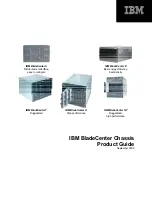
Chapter 2
Installation and Configuration
©
National Instruments Corporation
2-11
10 MHz REF Rear Connectors
There are two BNC connectors on the rear of the PXI-1045 chassis
designated 10 MHz REF. The connectors are labeled IN and OUT. You can
use them for supplying the backplane with a 10 MHz reference clock or
routing the backplane’s PXI_CLK10 signal to another chassis.
10 MHz REF IN
You can use the 10 MHz REF IN connector to supply an external 10 MHz
clock to the backplane PXI_CLK10. This external clock signal will be
buffered and provided to each peripheral slot’s PXI_CLK10 pin with a
maximum slot-to-slot skew of 250 ps. When the backplane detects a
10 MHz signal on the 10 MHz REF IN connector, it automatically
overrides the 10 MHz clock provided by the backplane and uses the
externally provided clock. If the backplane detects a 10 MHz clock on the
PXI_CLK10_IN pin of slot 2 and a 10 MHz clock on the 10 MHz REF IN
connector, the backplane automatically selects the signal from slot 2 and
provides that signal to each peripheral slot.
The input impedance of the 10 MHz REF IN connector on the rear of the
chassis is 50
± 5
. The backplane accepts a 10 MHz clock signal
between 200 mV
pp
and 5 V
pp
and rejects any DC component of the 10 MHz
REF IN signal. The input signal may be a 10 MHz square wave or sine
wave.
10 MHz REF OUT
The 10 MHz REF OUT connector provides a buffered non-TTL version
of the PXI_CLK10 TTL signal supplied to the peripheral slots on the
backplane. You can use this signal to synchronize multiple PXI chassis to
the same PXI_CLK10 signal.
The output impedance of this connector is 50
± 5
. The output signal
is a 1 V
pp
±20% non-TTL square wave.
PXI System Configuration with MAX
Configuration of the PXI system is handled through Measurement &
Automation Explorer (MAX), included on the NI Driver CD-ROM
packaged with your kit. MAX creates the
pxisys.ini
file which defines
the layout and parameters of your PXI system. After installing the software
on the NI Driver CD-ROM, the MAX icon will be present on the desktop.
















































